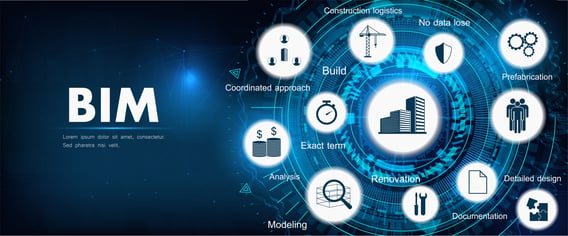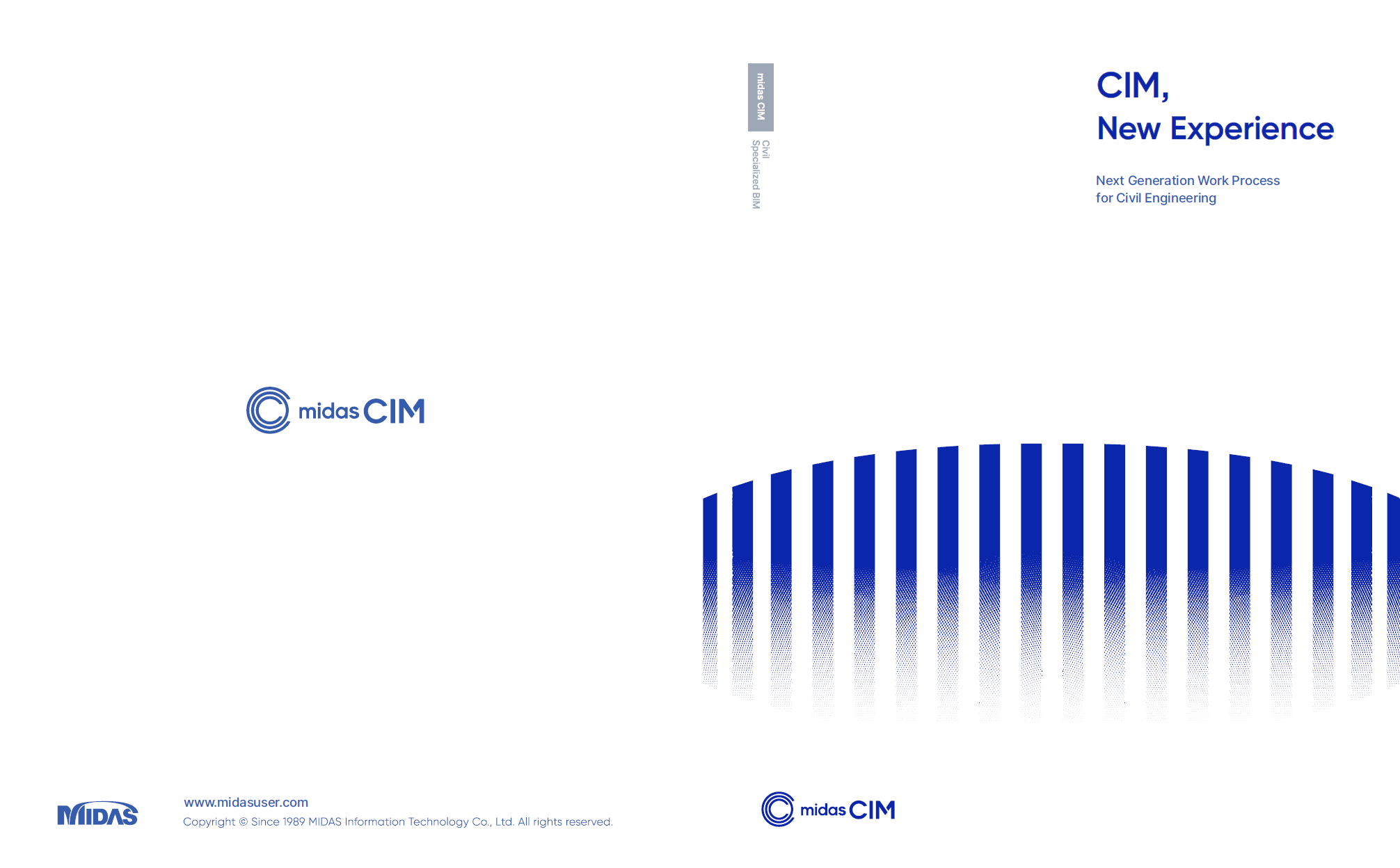Global Adoption of BIM & International BIM Standards
Please fill out the Download Section (Click here) below the Comment Section to download the midas CIM - Bridge Information Modeling (BrIM) software
Table of Contents
3. Different International BIM Standards
1. Introduction
One of the most promising advancements in the architecture, engineering, and construction (AEC) sector is Building Information Modelling (BIM). All the major nations have begun paying attention to the implementation of BIM as urbanization, and smart cities gather momentum. Moreover, the inefficient project management process is common, leading to infrastructure project failures. BIM can be very useful in avoiding such mishaps, and hence it has been implemented by various organizations. The same BIM concept can be implemented for bridges, and it's called Bridge Information Modelling(BrIM). In this article, we shall discuss the global adoption of BIM and the different International BIM standards.

2. Global Adoption of BIM
Many nations have used BIM technology for public-level projects, including the United States, the United Kingdom, China, Singapore, South Korea, France, etc. The United States is considered one of the nations that adopted BIM first. In the United States, numerous public sector organizations (Like the General Service Administration, US Army Corps of Engineers, etc.) at various levels have created BIM initiatives, established BIM objectives and implementation timelines, and released BIM standards. Several nations in Europe too have started large BIM implementations.
The UK Government had made a strategy to adopt BIM Level 2 by 2016 (Click here to learn more on that). The public sector is crucial in influencing the adoption of BIM in the industry. BIM implementations have been intensifying in recent years as more and more government agencies and non-profit organizations from different nations across the world have included BIM in their projects and offered various BIM standards and solutions.
3. Different International BIM Standards
Now let’s discuss various international BIM standards.

a) ISO 19650:
ISO 19650 is, without a doubt, the first international BIM standard. Due to the lack of national regulation, BIM provisions are unavailable in some countries. As a result, engineers had to deal with various public or private groups that set their own standards, and this drastically slowed down the implementation of BIM. To tackle this, ISO 19650 was released in 2018.
ISO 19650 (Organization of information on construction works – Management of information in the use of BIM) is a global standard that governs the use of BIM to manage information regarding the whole life cycle of a built asset. The British Standard, BS 1192, served as the model for the ISO 19650, which seeks to standardize data transmission with clear benefits for the AEC industry.
Teams can reduce wasteful processes and improve the predictability of costs and execution time by using the ISO 19650 series. This is accomplished using a standardized information management strategy and upholding the BIM methodology's core values.
Information specifications (EIR, Exchange Information Requirement), information management plans (BIM Execution Plans), data sharing environments (CDE Common Data Environment), levels of information need (LOIN), project information requirements (PIR), and other concepts are all maintained by ISO 19650.
-
ISO 19650 Part 1 deals with information management during the construction process.
-
ISO 19650 Part 2 deals with information management during the asset delivery phase.
-
ISO 19650 Part 3 deals with information management during the operating phase of the asset.
-
ISO 19650 Part 4 gives guidelines to ensure the quality of the information model
-
ISO 19650 Part 5 provides guidelines for secure information management.
b) ISO 16739:
ISO 16739 describes the features of the Industry Foundation Classes (IFC) format for data exchange in a BIM process. The IFC file type is a crucial format for data exchange between users of various software within the same BIM-oriented workflow.
c) ISO 12006:
There are two components to International Standard ISO 12006 for BIM reference:
A framework for creating built environment classification systems is described in ISO 12006 Part 2. It is applicable at every stage of a construction project's life cycle, including briefing, design, documentation, construction, operation, and maintenance, as well as demolition. It covers landscaping and related engineering services as well as building and civil engineering projects.
The language-independent information model described in ISO 12006 Part 3 can be used to create dictionaries that store or present data regarding infrastructure projects. This document describes an API that links data dictionaries according to ISO 23386.
d) ISO 29481:
The objective of ISO 29481 Part 1, 2 & 3 is to make it easier for software applications to communicate with one another across the whole life cycle of a construction project.
e) ISO 21597:
ISO 21597 provides guidelines for managing numerous interrelated documents as a single information delivery. For example, the electrical layout of the project shall be linked with the piping layout, and this can be done based on ISO 21597.
f) ISO/TS 12911:
The technical requirements for the commission of BIM are described in ISO/TS 12911. This holds true for all kinds of structures, facilities, and projects.
g) ISO 23387:
The guidelines for linking data templates and IFC classes within an ISO 12006 Part 3-based data dictionary are provided in this document. The software developers tasked with making data templates based on sources outlining information requirements are the document's target users.
h) ISO/TS 19166:
ISO 19166 defines the conceptual framework and techniques for mapping information elements from Geographic Information Systems (GIS).
4. Conclusion:
A change is necessary for the AEC sector, and it's being spearheaded by BIM. The public sector may probably take the lead in promoting and facilitating the industry's use of BIM. As more and more government agencies and non-profit organizations worldwide adopted BIM in recent years, BIM implementations have been intensifying. To develop a more standardized, sophisticated, and creative BIM-based working environment in the AEC business, it is expected that more and more firms will embark on this journey and that more international efforts will be made.
By now, you must have a brief idea about the global adoption of BIM and the different international BIM standards. Stay tuned for more articles related to BIM.
 Get Started midas Civil
Get Started midas Civil
 Featured blog of this week
Featured blog of this week









